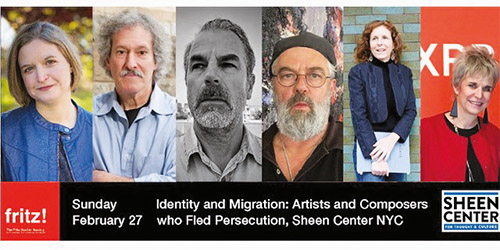

(Courtesy of Fritz Ascher Society) On Sunday, February 27 at 3 p.m., the Sheen Center for Thought and Culture in New York will present “Identity and Migration: Artists and Composers who Fled Persecution.”
What defines human identity? DNA? Language? Culture? Landscape? Polity? Or is it a combination of all of these factors? How do the sources of identity make it easy or difficult for individuals who migrate from one location to another—by choice or under duress—not merely to adapt but to become fully comfortable within their new home?
This exhibit explores how artists, who are purveyors and shapers of culture, respond to their own migration. The topics covered at the launch event include U.S. immigration policy during the 1930s refugee crisis; the role of religious art in holding together displaced communities; the degree to which incoming refugees were able to adapt to their new surroundings and how this impacted their art; the effect of globalization on this phenomenon; and if composers had similar experiences as other artists.
This event celebrates the launch of the online exhibition “Identity, Art and Migration,” which investigates seven Jewish European artists who were forced to abandon their country of origin or remain in hiding for years, in response to Nazi policies in effect from 1933 to 1945.
This event is generously sponsored by the Consulate General of the Federal Republic of Germany in New York and co-presented by The Fritz Ascher Society for Persecuted, Ostracized and Banned Art and the Sheen Center for Thought and Culture. Supported by the World Jewish Congress North America.
More information and link for ticket purchase: https://fritzaschersociety.org/exhibition-event/sheen-center/.









